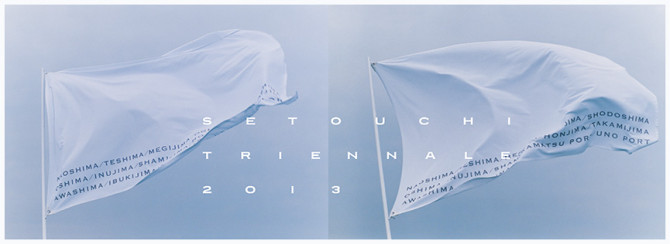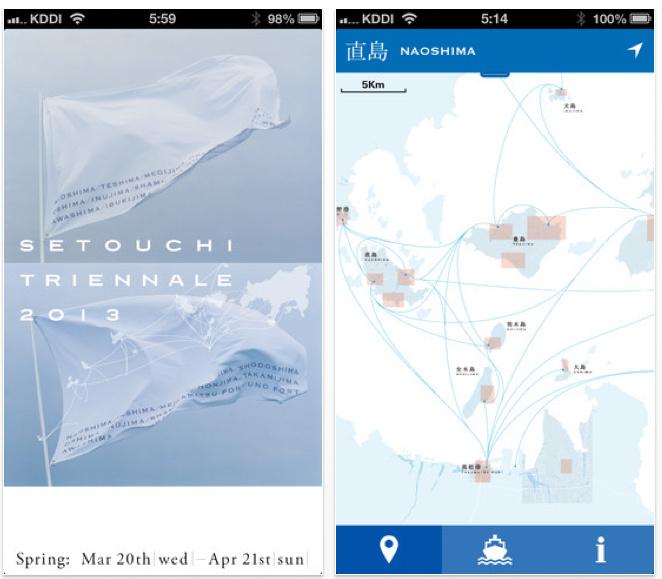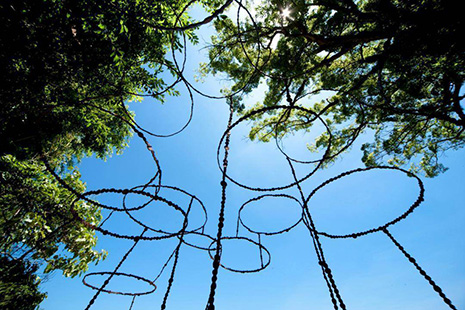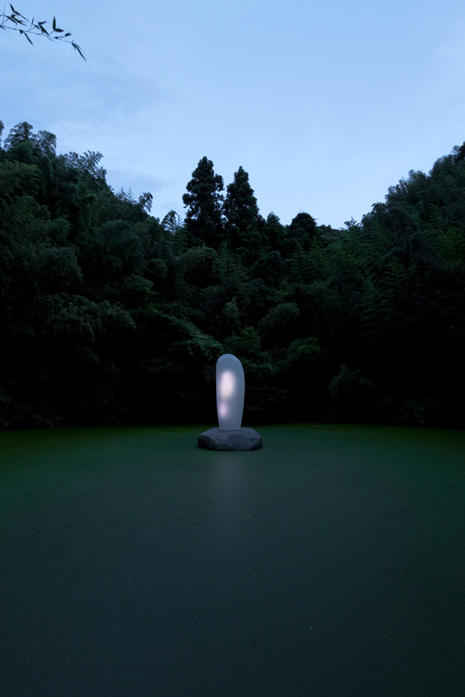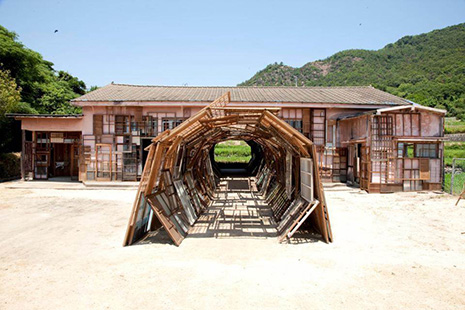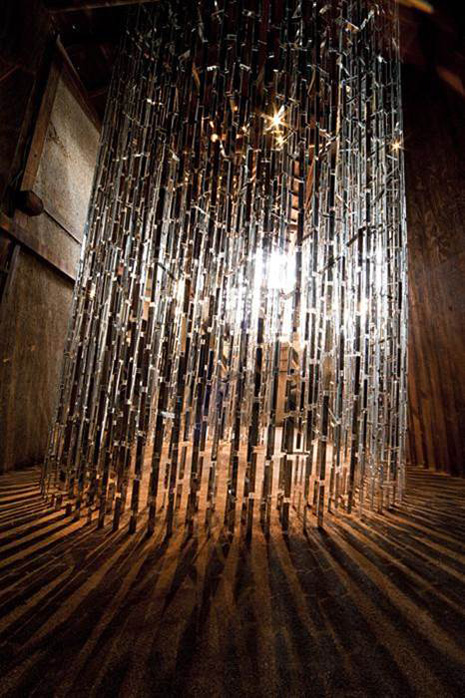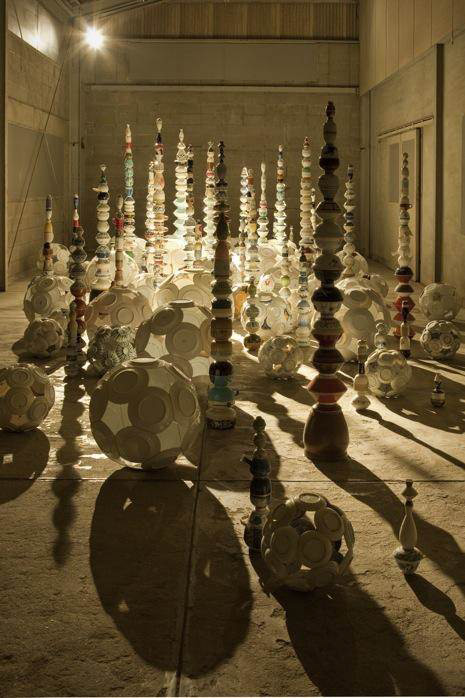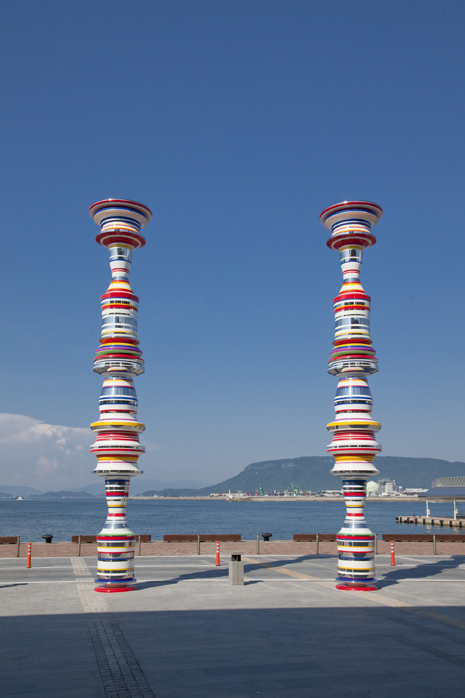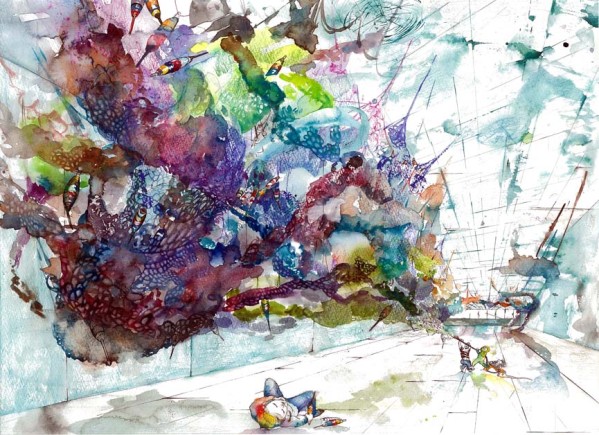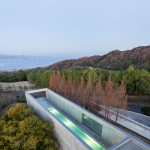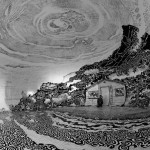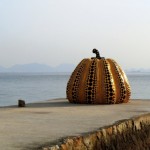200 Artworks, 12 islands and 108 days. The 2013 Setouchi Triennale kicked off on March 20th and will run all the way through November 4, 2013. This time the festival is divided into 3 seasons – Spring, Summer and Fall, with artworks rotating on and off during different seasons. It’s the perfect getaway and a great way to experience both the great outdoors and an outdoor museum with a diverse display of environmental and site-specific work.
“The power to attract people to all of the individualistic islands lies with the art and architecture that has developed there,” says the organizers. “These aspects are an art form whose purpose lies in getting people involved with nature, amid the beautiful natural setting that is inherent to the Setouchi area.”
If you do go, be sure to download the new and improved app courtesy of Kenya Hara (who also designed the posters and overall look). It will help you navigate where different artworks are located and how to get to them.
Here are some of the highlights that I would like to see if I went. You can also check out some of the old articles we’ve written on the Setouchi art movement.
Particles in the Air by Noe Aoki
Rust-covered shafts of Corten (weathering) steel straddle a water tank embedded in the ground. Circular hoops hover in the air above like dancing particles.
Tom Na H-iu by Mariko Mori
This contemporary monument is a symbol of life and death. The sculpture, which is connected to the Kamioka Observatory by computer, glows each time a supernova explosion is recorded, signaling the death of a star.
Distant Memory by Chiharu Shiota
For the first Setouchi Triennale in 2010, the artist gathered wooden fittings from various islands to build a tunnel. Three years later, weathering of the structure dictates that 2013 will be the last year the current work will be open to the public.
Equipoise by Harumi Yukutake
More than ten thousand hand-worked mirror plates are suspended from the ceiling of a renovated storehouse. Light reflected in the mirror fragments shimmers with each passing breeze, enveloping the viewer in a vision of light.
The Light of Shodoshima by Wang Wen Chih
A giant dome constructed of 5,000 island-grown bamboo lies at the foot of a slope of terraced fields. The impressive structure alters the landscape. Visitors can enjoy wandering around the building and, at night, can see it lit up by LEDs.
Tsugi-Tsugi-Kintsugi by Masayuki Kishimoto
Ceramic dishes and vessels collected from the islanders are joined together by kintsugi, a Japanese pottery restoration technique.
Liminal Air -core- by Shinji Ohmaki
Two colorful 8-meter pillars stand at Takamatsu Port. Parts of the pillars mirror the scenery so that the appearance of the sculpture alters depending on the time of day and where the viewer stands.
Unsinkable Ship by Ryo Toyofuku
A three-dimensional work using fishing tackle and household items to create an undersea world with schools of fish. The highlight is the 50,000 floats made during workshops with the islanders as well as with children and adults from Kanonji city.

